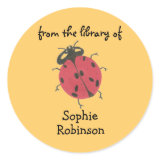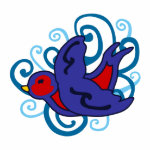I went to a parent discussion recently where the moderator talked about how kids' "sphere of influence" expands as they mature. Even through adolescence, parents remain major players in how a child sees him/herself and the world -- but peers matter more and more.
When
ADHD is in the picture, this process can be tricky...but rewarding, too. I wanted to know how
kids with ADHD can support each other, and Rob Himburg -- director of education at the
Leelanau School in Michigan, where he also collaborates with
Ned Hallowell, M.D., on a weeklong
summer enrichment camp for kids with ADHD and their parents -- seemed like the perfect person to ask. Here's what he's seen:
When brought together, kids with ADHD connect in a matter of "minutes." Himburg, who works with kids in the summer program while Dr. Hallowell engages their parents, says he can predict the affiliations instantly: "Those four boys are gonna end up building things together in the woods. Those older boys will talk about the music they're into. Those girls will draw together on our breaks."
Just being together is therapeutic for the kids (and, by extension, their parents). "Every year on about the second morning, a mom or dad comes in and says, "'It's already been worth it. My [child] is saying, I can't believe there are other kids just like me.'"
In academic situations, peer support grows from awareness of self and others. Group work, says Himburg, is "maybe one of the most difficult things we ask" of students at Leelanau, which customizes a rigorous college-prep curriculum to different learning styles. But it pays off in stronger empathy and problem solving, he says. When students know their strengths and others', it "helps create a balance" in the group. "The kids are able to decide 'okay, you take notes; you're the idea guy; and you're a great speaker, so you're definitely doing the presentation...'"
Kids with ADHD benefit from caring "typical" friends. Peers without ADHD can bring out the best in their attention-challenged friends by understanding that ADHD has "nothing to do with intelligence," says Himburg; by appreciating strengths ("maybe that friend with ADHD isn't the strongest in math class, but he's the school champion at tree climbing"); by being patient with typical ADHD behaviors like fidgeting, impulsiveness, zoning out, etc.; and, sometimes, through constructive criticism: "A good friend will learn how to say, 'You know that thing you do? People don't seem to like that.'"
Done well, support-type groups for kids with ADHD can be valuable. In his previous work at the Bay-area
Charles Armstrong School, Himburg enlisted 6th through 8th grade students in mentoring 2nd through 4th graders. The kids spent lunches together doing service projects, enjoying books (with older students reading aloud), etc. When younger kids started talking about playground challenges, "the older kids asked if they could help out," says Himburg. "So we rotated them through recess, and they became like on-field 'coaches' for fun games. They also brought simple problem-solving tactics -- like the 'do-over' concept when two kids disagree -- that they could demonstrate better than adults."
So there you go. Given the right conditions,
leadership jumps onto the rich list of assets kids with ADHD can use to help other kids. Says Himburg, "Sometimes you just need to get out of their way."

















 Imelda Marcos has nothing on Oliva Wright, 11. Through her Tennessee H.U.G.S. organization, the Hendersonville, Tenn., girl has collected an astounding 3,000+ pairs of shoes. But unlike Marcos, Olivia won't be modeling her collection. H.U.G.S. stands for Help Us Give Shoes, and these kicks all go to kids (and adults) in need, mostly in the Appalachians.
Imelda Marcos has nothing on Oliva Wright, 11. Through her Tennessee H.U.G.S. organization, the Hendersonville, Tenn., girl has collected an astounding 3,000+ pairs of shoes. But unlike Marcos, Olivia won't be modeling her collection. H.U.G.S. stands for Help Us Give Shoes, and these kicks all go to kids (and adults) in need, mostly in the Appalachians.  Thought-provoking documentary "Race to Nowhere," screened last week near my home, underscores how pressured many teens' lives have become, with expectations to excel in academics, athletics, arts & community service. Structured, longer-term service projects can be tough to commit to when there's so much more to juggle. That's why the second annual Generation Cures "Battle of the Bands" online music contest is so appealing. Teen musicians can do something they already do for -- gasp ;) -- fun, within a limited timeframe, and in the process raise money for Children's Hospital Boston.
Thought-provoking documentary "Race to Nowhere," screened last week near my home, underscores how pressured many teens' lives have become, with expectations to excel in academics, athletics, arts & community service. Structured, longer-term service projects can be tough to commit to when there's so much more to juggle. That's why the second annual Generation Cures "Battle of the Bands" online music contest is so appealing. Teen musicians can do something they already do for -- gasp ;) -- fun, within a limited timeframe, and in the process raise money for Children's Hospital Boston.  If losing builds character, well, my son's baseball team was oozing it last spring, with only 1 win all season. It was hard not to feel bad for the kids, who played hard and seemed confused by all the games that slipped away in the last inning or two. Still, there were highlights from a parent's perspective, and most of them involved shows of support between team members. Sportsmanship, after all, is easy when you're winning, not so much when you can't get a break.
If losing builds character, well, my son's baseball team was oozing it last spring, with only 1 win all season. It was hard not to feel bad for the kids, who played hard and seemed confused by all the games that slipped away in the last inning or two. Still, there were highlights from a parent's perspective, and most of them involved shows of support between team members. Sportsmanship, after all, is easy when you're winning, not so much when you can't get a break. 

 A computer-obsessed 16-year-old may not sound all that unusual, but how about one who has channeled his passion into programs that protect the planet and help kids learn? That would be Alex Lin.
A computer-obsessed 16-year-old may not sound all that unusual, but how about one who has channeled his passion into programs that protect the planet and help kids learn? That would be Alex Lin.


















 By customer request, personalized bookplates are the latest addition to our family shop, Karate Kat Graphics, which uses kids' artwork to help kids in extreme poverty through Save the Children. Choose from a variety of critters (the ladybug design shown, a dragonfly, bird, butterfly & an ocean scene) or go with flowers or a purple-hued rainbow. A sheet of 20 adhesive bookplates sets you back about 5 bucks.
By customer request, personalized bookplates are the latest addition to our family shop, Karate Kat Graphics, which uses kids' artwork to help kids in extreme poverty through Save the Children. Choose from a variety of critters (the ladybug design shown, a dragonfly, bird, butterfly & an ocean scene) or go with flowers or a purple-hued rainbow. A sheet of 20 adhesive bookplates sets you back about 5 bucks.








